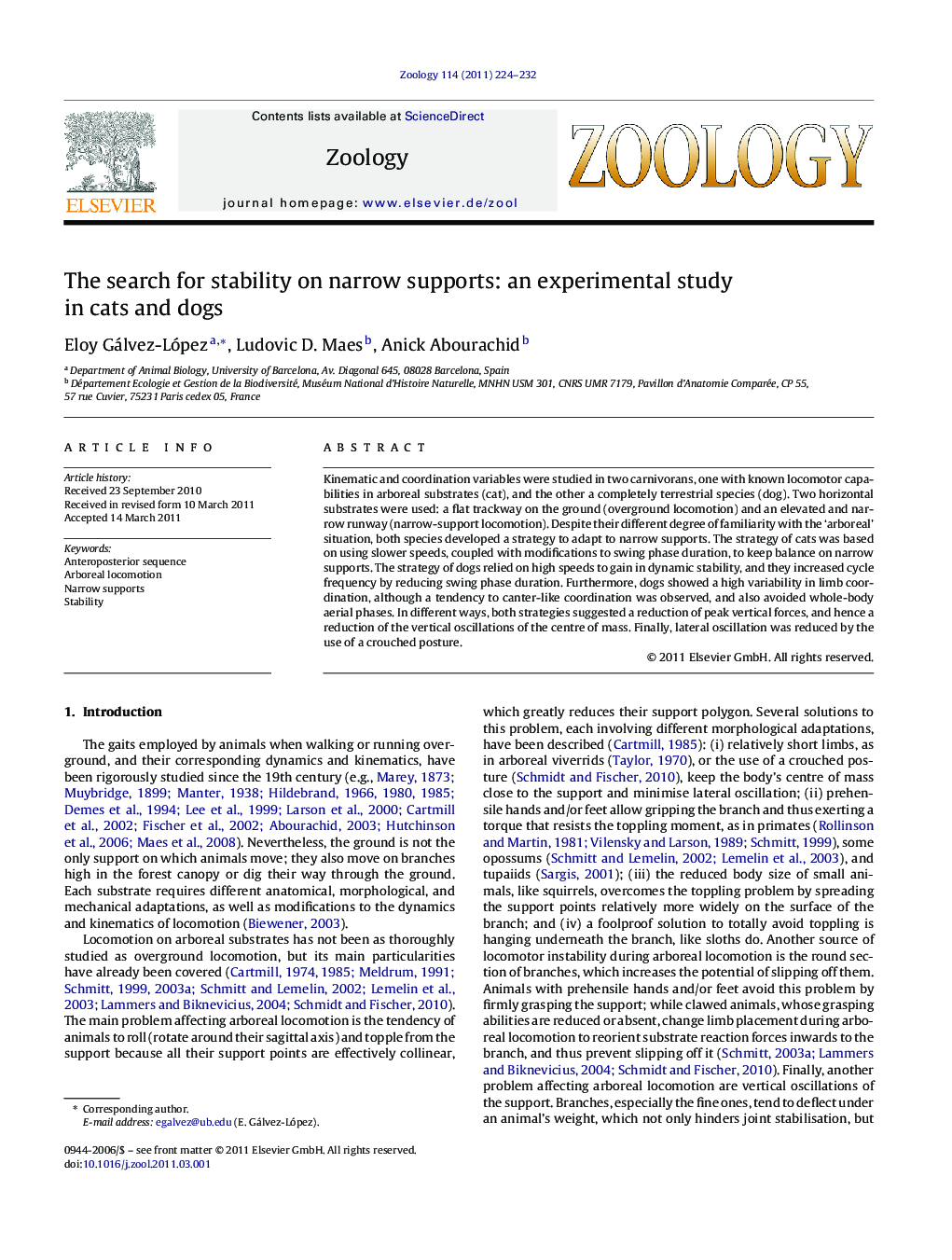| Article ID | Journal | Published Year | Pages | File Type |
|---|---|---|---|---|
| 2791051 | Zoology | 2011 | 9 Pages |
Kinematic and coordination variables were studied in two carnivorans, one with known locomotor capabilities in arboreal substrates (cat), and the other a completely terrestrial species (dog). Two horizontal substrates were used: a flat trackway on the ground (overground locomotion) and an elevated and narrow runway (narrow-support locomotion). Despite their different degree of familiarity with the ‘arboreal’ situation, both species developed a strategy to adapt to narrow supports. The strategy of cats was based on using slower speeds, coupled with modifications to swing phase duration, to keep balance on narrow supports. The strategy of dogs relied on high speeds to gain in dynamic stability, and they increased cycle frequency by reducing swing phase duration. Furthermore, dogs showed a high variability in limb coordination, although a tendency to canter-like coordination was observed, and also avoided whole-body aerial phases. In different ways, both strategies suggested a reduction of peak vertical forces, and hence a reduction of the vertical oscillations of the centre of mass. Finally, lateral oscillation was reduced by the use of a crouched posture.
